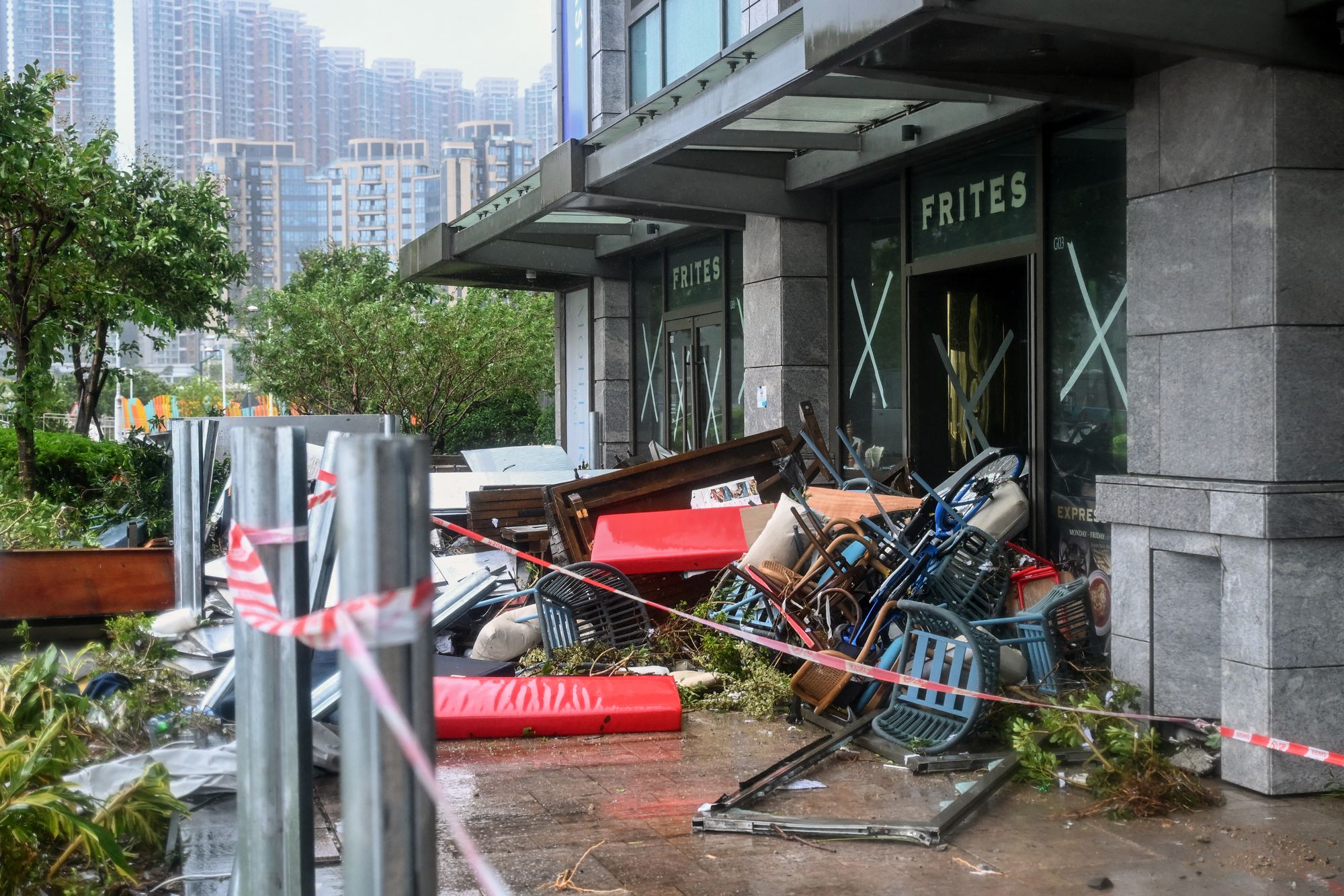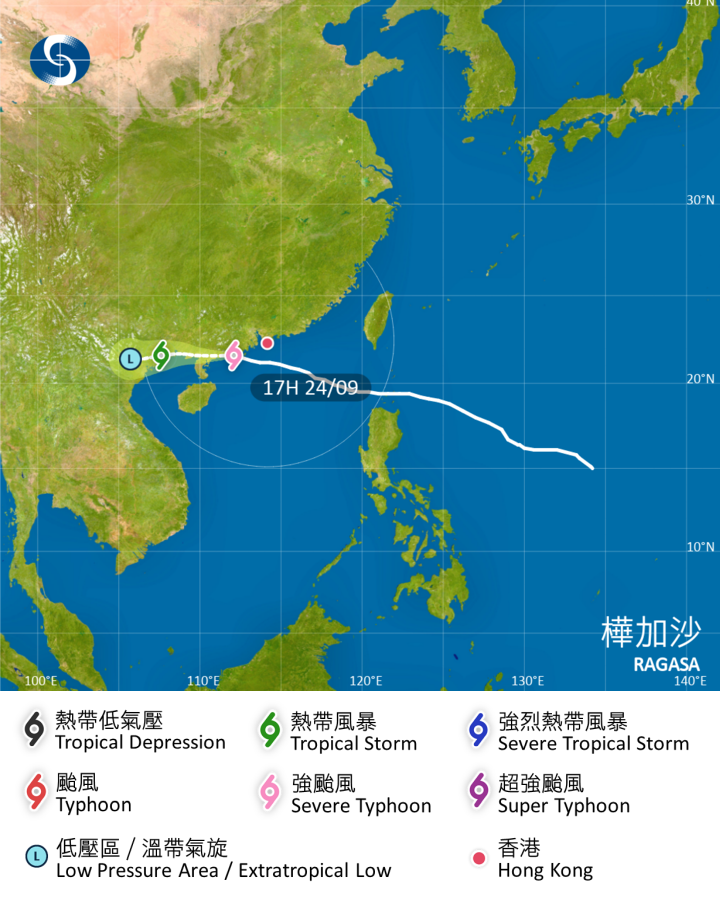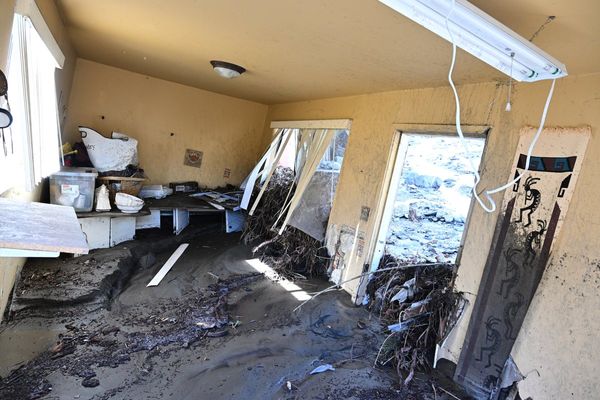At least 17 people died in Taiwan as a wall of water crashed through the town of Guangfu after a barrier lake burst under the pressure of torrential rains from Typhoon Ragasa, the strongest storm of the year so far.
Residents described the flood as hitting like a “tsunami”, tearing down a major bridge, sweeping cars into homes, and forcing thousands to flee to higher ground.
Police cars blared sirens on Wednesday to warn of fresh floods as survivors scrambled to shelters.
“We will not return until the overflow is finished or the risk of it bursting is reduced. It’s too dangerous,” a woman named Tsai, who joined hundreds packed into an elementary school shelter, told Reuters news agency.
Taiwan’s fire department said about 5,200 people – 60 per cent of Guangfu’s population – had sought safety in their homes’ upper floors or with relatives.
The military deployed 340 troops with armoured vehicles to deliver food and water through streets thick with mud and strewn with wreckage.

The government said the lake released some 60 million tonnes of water – enough to fill 36,000 Olympic swimming pools – after rain-lashed landslides blocked a river and then gave way.
Hong Kong and Macau also remained under its path of fury. Authorities raised the city’s highest typhoon signal early on Wednesday, shuttering schools, businesses and transport links.
The storm whipped waves taller than lampposts onto Hong Kong promenades and turned seas rough. A mother and her five-year-old son were in critical condition after they were swept into the sea while wave-watching.
Residents posted photos and videos of fallen trees, debris with water gushing into some buildings.

The international airport of the city saw around 1,000 flights getting cancelled, impacting some 140,000 passengers. The services will be resuming slowly after midnight, the airport said.
In neighbouring Macau, bridges were closed and residents ordered to evacuate low-lying districts. Across Guangdong, almost 400,000 people have been moved from coastal areas, with Shenzhen, Zhuhai and other cities suspending classes, offices and transport.
As Ragasa moved on towards Southern China’s Guangdong, it lost some of its wrath and weakened to a severe typhoon, equivalent to a Category 3 storm.
The typhoon made landfall along the coast of Hailing Island in Yangjiang city at about 5pm, packing maximum winds near the center of 144kmph, state broadcaster CCTV said. It was forecast to keep moving west and trigger rainfall and some wind gusts. Ragasa earlier packed winds of nearly 300kmph at its peak.

Chinese authorities moved nearly 2 million people to safety. Schools, factories and transportation services were initially suspended in about a dozen cities, but a few of them distant from the landfall location were preparing to resume work as winds weakened
In the Philippines, where it first struck earlier this week, the death toll climbed to 10 from floods and landslides. Nearly 700,000 people were affected by the onslaught, of whom 25,000 fled to government emergency shelters.
Scientists warn climate crisis is fuelling more frequent and powerful tropical cyclones, putting millions across Asia’s typhoon belt at increasing risk.
Typhoon Ragasa live: Most powerful storm of 2025 makes landfall in China
In pictures: Ragasa hurtles towards China after wreaking havoc in Philippines
Typhoon Ragasa mapped: Strongest storm of 2025 nears China landfall
Alan Cumming backs campaign for Scotland to become first ‘rewilding nation’
At least 10 dead after Indian city receives heaviest rainfall in nearly 40 years
Team to spend Christmas on Antarctica in mission to conserve historic base







